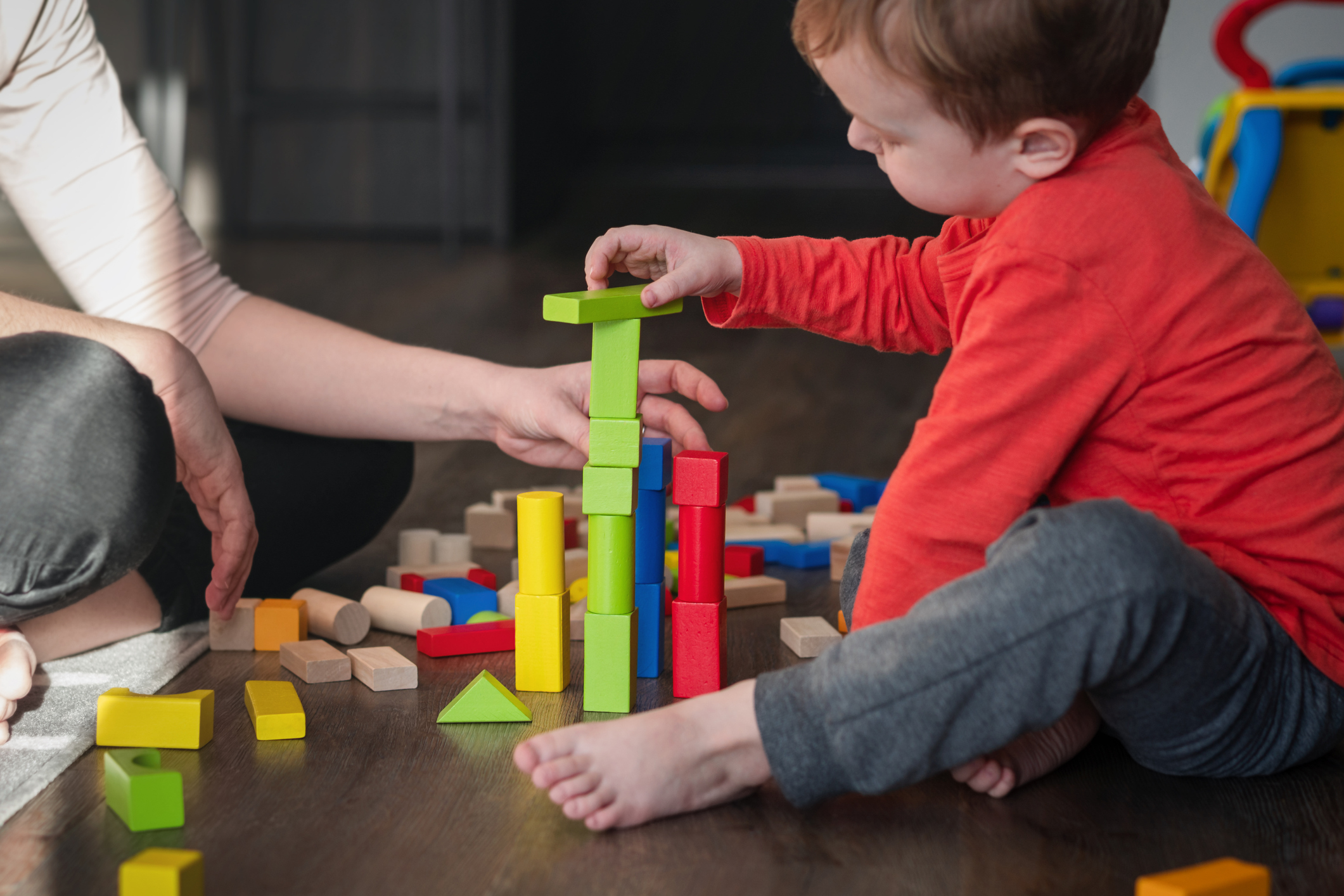In today’s educational landscape, it is becoming increasingly important to create safe spaces in classrooms that are trauma-informed. Trauma can have a profound impact on a student’s ability to learn and thrive, and educators need to understand how to create an environment that promotes healing and support.
This blog post will delve into the essentials of creating a trauma-informed classroom, highlighting the importance of a safe and nurturing environment. We will explore the essential elements that contribute to a trauma-informed classroom and discuss the crucial role of the teacher in fostering healing and support.
Furthermore, we will provide strategies for educators to implement in their classrooms to foster healing and support for students who have experienced trauma. From incorporating mindfulness and self-care practices to building strong, positive relationships with students, these strategies will help create an environment where students feel safe and supported.
Dealing with challenging behaviour is also a crucial aspect of a trauma-informed classroom. We will discuss the importance of understanding the root cause of the behaviour and provide trauma-informed discipline strategies. Additionally, we will explore how to support students in crisis and ensure their emotional well-being.
Professional development and support for educators are vital in implementing trauma-informed practices effectively. We will address the training needs for educators to become proficient in trauma-informed techniques, as well as the importance of self-care and support for educators themselves. Finally, we will discuss the significance of building a trauma-informed school community that extends beyond individual classrooms.
Creating safe spaces in trauma-informed classrooms is a multifaceted process, but with the right strategies and support, educators can make a profound impact on the healing and growth of their students. Join us in this blog post as we explore the strategies and techniques necessary to foster healing and support in trauma-informed classrooms.
Understanding Trauma and Its Impact on Learning
Understanding Trauma and Its Impact on Learning
Trauma is a deeply distressing or disturbing experience that overwhelms an individual’s ability to cope. It can result from various events, such as abuse, neglect, violence, natural disasters, or the loss of a loved one. Traumatic experiences can have long-lasting effects on a person’s mental, emotional, and physical well-being.
When it comes to learning, trauma can significantly impact a student’s ability to engage in the educational process. The brain’s response to trauma can interfere with cognitive functions, memory, attention, and emotional regulation, making it challenging for students to concentrate, retain information, and participate in classroom activities.
In understanding the impact of trauma on learning, it is crucial to recognise the concept of a “fight, flight, or freeze” response. When a student experiences trauma, their brain may activate this response, leading to heightened anxiety, hypervigilance, or dissociation. These reactions can impede their ability to feel safe, trust others, and engage in learning.
Moreover, trauma can affect a student’s behaviour, leading to difficulties in managing emotions, forming relationships, and regulating impulses. Educators need to understand these behavioural manifestations of trauma and respond with empathy and support.
By developing a deeper understanding of trauma and its impact on learning, educators can better address the needs of students who have experienced trauma in their classrooms. In the following sections, we will explore strategies and approaches to create trauma-informed classrooms that foster healing and support for all students.
Essentials of Creating a Trauma-Informed Classroom
Essentials of Creating a Trauma-Informed Classroom
Creating a trauma-informed classroom is about more than just implementing a few strategies or techniques. It requires a comprehensive approach that prioritizes safety, trust, and emotional well-being. In this section, we will explore the essential elements that contribute to a trauma-informed classroom and discuss the role they play in fostering healing and support.
- The Importance of a Safe and Nurturing Environment:
- Establishing physical and emotional safety is paramount in a trauma-informed classroom. Students need to feel secure and protected in their learning environment.
- Creating a physically safe space involves ensuring that the classroom is free from potential triggers, hazards, or situations that may cause distress.
- Emotionally, the classroom should be a place where students feel supported, respected, and valued. Building a positive and inclusive classroom culture is key.
- Building Trust and Connection:
- Building strong, positive relationships with students is crucial in a trauma-informed classroom. Trust is the foundation for creating a safe space where students feel comfortable expressing themselves and seeking support.
- Teachers can foster trust by being consistent, reliable, and empathetic. It is essential to listen actively, validate students’ experiences, and respond with compassion and understanding.
- Empowering Students through Choice and Voice:
- Empowering students to have a sense of control and agency in their learning is vital in a trauma-informed classroom.
- Providing choices and opportunities for student input and decision-making allows them to feel more engaged and invested in their education.
- Encouraging students to share their thoughts, ideas, and concerns helps validate their experiences and gives them a sense of ownership in the classroom community.
- Cultivating Emotional Regulation and Coping Skills:
- Students who have experienced trauma often struggle with regulating their emotions and managing stress. In a trauma-informed classroom, it is essential to teach and reinforce emotional regulation and coping skills.
- Implementing mindfulness exercises, deep breathing techniques, or incorporating calming strategies can help students develop self-awareness, emotional resilience, and coping mechanisms.
- Collaboration with Families and Support Services:
- Creating a trauma-informed classroom requires collaboration and communication with families and support services.
- Building partnerships with families helps create a holistic support system for students. It allows educators to gain valuable insights into students’ backgrounds, strengths, and challenges.
- Collaborating with support services, such as school counsellors, social workers, or psychologists, can provide additional resources and expertise to address the specific needs of students who have experienced trauma.
By focusing on these essential elements, educators can lay the foundation for a trauma-informed classroom that fosters healing, support, and academic success for all students. In the next section, we will explore the pivotal role of the teacher in creating and maintaining a trauma-informed environment.
Strategies for Fostering Healing and Support
Strategies for Fostering Healing and Support
Creating a trauma-informed classroom involves implementing strategies that promote healing, resilience, and support for students who have experienced trauma. These strategies aim to create a safe and nurturing environment where students can thrive academically, socially, and emotionally. In this section, we will explore several effective strategies that educators can employ in their classrooms.
- Incorporating Mindfulness and Self-Care:
- Mindfulness practices can help students develop self-awareness, self-regulation, and emotional well-being. Techniques such as deep breathing exercises, guided meditation, or mindful movement can be integrated into daily classroom routines.
- Educators can also model self-care by prioritizing their well-being. Taking care of their mental and physical health not only benefits teachers but also demonstrates the importance of self-care to students.
- Building Strong, Positive Relationships:
- Developing strong and positive relationships with students is a cornerstone of a trauma-informed classroom. Building trust, mutual respect, and understanding are key components.
- Teachers can create opportunities for one-on-one interactions, provide individualized support, and actively listen to students’ needs and concerns.
- Cultivating a sense of belonging and community within the classroom helps students feel valued and supported.
- Empowering Students through Choice and Voice:
- Providing students with opportunities for choice and voice in their learning empowers them and enhances their sense of agency.
- Educators can offer options for assignments, projects, or learning activities that align with students’ interests and strengths.
- Encouraging students to share their thoughts, ideas, and opinions in class discussions promotes a sense of ownership and fosters critical thinking skills.
- Trauma-Informed Teaching Practices:
- Adopting trauma-informed teaching practices can create a more supportive and inclusive learning environment.
- Teachers can break down lessons into smaller, manageable tasks, provide clear instructions, and offer additional support when needed.
- Incorporating visual aids, hands-on activities, and multi-sensory approaches can enhance understanding and engagement for students who have experienced trauma.
- Cultivating Resilience and Strengths:
- Recognizing and nurturing students’ strengths and resilience is essential in a trauma-informed classroom.
- Celebrating their achievements, fostering a growth mindset, and providing opportunities for skill-building can enhance students’ self-esteem and confidence.
- Encouraging reflective practices and teaching problem-solving skills helps students develop resilience and adaptability in the face of challenges.
By implementing these strategies, educators can create a trauma-informed classroom that promotes healing, support, and growth for all students. In the next section, we will explore how to effectively deal with challenging behaviour in a trauma-informed manner.
Dealing with Challenging Behavior
Dealing with Challenging Behavior
In a trauma-informed classroom, educators need to approach challenging behaviour with empathy, understanding, and a trauma-informed lens. Many students who have experienced trauma may exhibit difficult behaviours as a result of their past experiences. In this section, we will explore strategies for understanding the root cause of behaviour, applying trauma-informed discipline strategies, and supporting students in crisis.
- Understanding the Root Cause of Behavior:
- Challenging behaviour often serves as a communication of unmet needs or distress. It is essential to look beyond the surface behaviour and try to understand the underlying triggers or trauma-related factors.
- By practising active listening, observing patterns, and engaging in open communication with students, educators can gain insights into the root causes of challenging behaviour.
- Applying Trauma-Informed Discipline Strategies:
- Traditional disciplinary approaches may not be effective or appropriate for students who have experienced trauma. Trauma-informed discipline strategies prioritize connection, understanding, and teaching new skills.
- Instead of punitive measures, educators can focus on building a supportive relationship with the student, setting clear expectations, and providing opportunities for reflection and growth.
- Restorative practices, such as restorative circles or peer mediation, can be effective in resolving conflicts and repairing harm while fostering a sense of accountability and empathy.
- Supporting Students in Crisis:
- Students who have experienced trauma may face moments of crisis or emotional distress. Educators must be prepared to provide immediate support and assistance.
- Establishing a crisis intervention plan and collaborating with school support services can ensure a coordinated and effective response.
- Creating a safe space for students to express their emotions, providing calming strategies, and offering appropriate resources for additional support are essential in helping students navigate through crises.
By adopting trauma-informed approaches to challenging behaviour, educators can create an environment that supports students’ emotional well-being, promotes self-regulation, and fosters positive behaviour. In the next section, we will explore the importance of professional development and support for educators in implementing trauma-informed practices effectively.
Professional Development and Support for Educators
Professional Development and Support for Educators
Implementing trauma-informed practices in the classroom requires ongoing professional development and support for educators. Teachers play a pivotal role in creating safe spaces and fostering healing and support for students who have experienced trauma. In this section, we will explore the training needs for effective trauma-informed practices, the importance of self-care and support for educators, and building a trauma-informed school community.
- Training Needs for Effective Trauma-Informed Practices:
- Educators need comprehensive training on trauma-informed practices to understand the impact of trauma on learning and develop the necessary skills and knowledge to create trauma-informed classrooms.
- Training should cover topics such as trauma awareness, the neurobiology of trauma, trauma-informed teaching strategies, and trauma-informed discipline approaches.
- Collaborating with trauma-informed experts, attending workshops, and participating in professional development programs specific to trauma-informed practices can enhance educators’ understanding and implementation of these strategies.
- Self-Care and Support for Educators:
- Educators who work with students who have experienced trauma may face emotional challenges and burnout. Educators need to prioritize their self-care and well-being.
- Engaging in self-care practices, such as exercise, mindfulness, seeking support from colleagues or mental health professionals, and setting boundaries, can help educators maintain their emotional resilience.
- School administrators should provide resources and create a supportive environment that promotes self-care and recognizes the importance of educator well-being.
- Building a Trauma-Informed School Community:
- Creating a trauma-informed school community involves a collaborative effort from all stakeholders, including administrators, teachers, support staff, and families.
- School-wide professional development sessions, staff meetings, and collaborative planning time can be used to foster a shared understanding of trauma-informed practices.
- Establishing trauma-informed policies, procedures, and practices across the school can create a cohesive and consistent approach to supporting students who have experienced trauma.
- Involving families in the process, through workshops, open communication, and partnerships, can further strengthen the trauma-informed school community.
By providing educators with the necessary training, support, and resources, schools can create an environment where trauma-informed practices are effectively implemented, and educators feel equipped to support their students. In conclusion, creating safe spaces and fostering healing and support in trauma-informed classrooms requires a collective effort to prioritize the well-being and success of all students.
Related posts:
 8 Top Tips for Using Dan Hughes’ PACE in the Classroom with Pupils Who Have a Lived Experience of Trauma and Unmet Attachment Needs
8 Top Tips for Using Dan Hughes’ PACE in the Classroom with Pupils Who Have a Lived Experience of Trauma and Unmet Attachment Needs
 Building Trust Through Therapeutic Parenting: Techniques for Creating Safe and Secure Environments
Building Trust Through Therapeutic Parenting: Techniques for Creating Safe and Secure Environments
 Creating Connection: Using Therapeutic Parenting to Foster Attachment in Residential Care
Creating Connection: Using Therapeutic Parenting to Foster Attachment in Residential Care
 The Impact of Trauma on Learning: Creating Trauma-Sensitive Classroom Environments
The Impact of Trauma on Learning: Creating Trauma-Sensitive Classroom Environments



